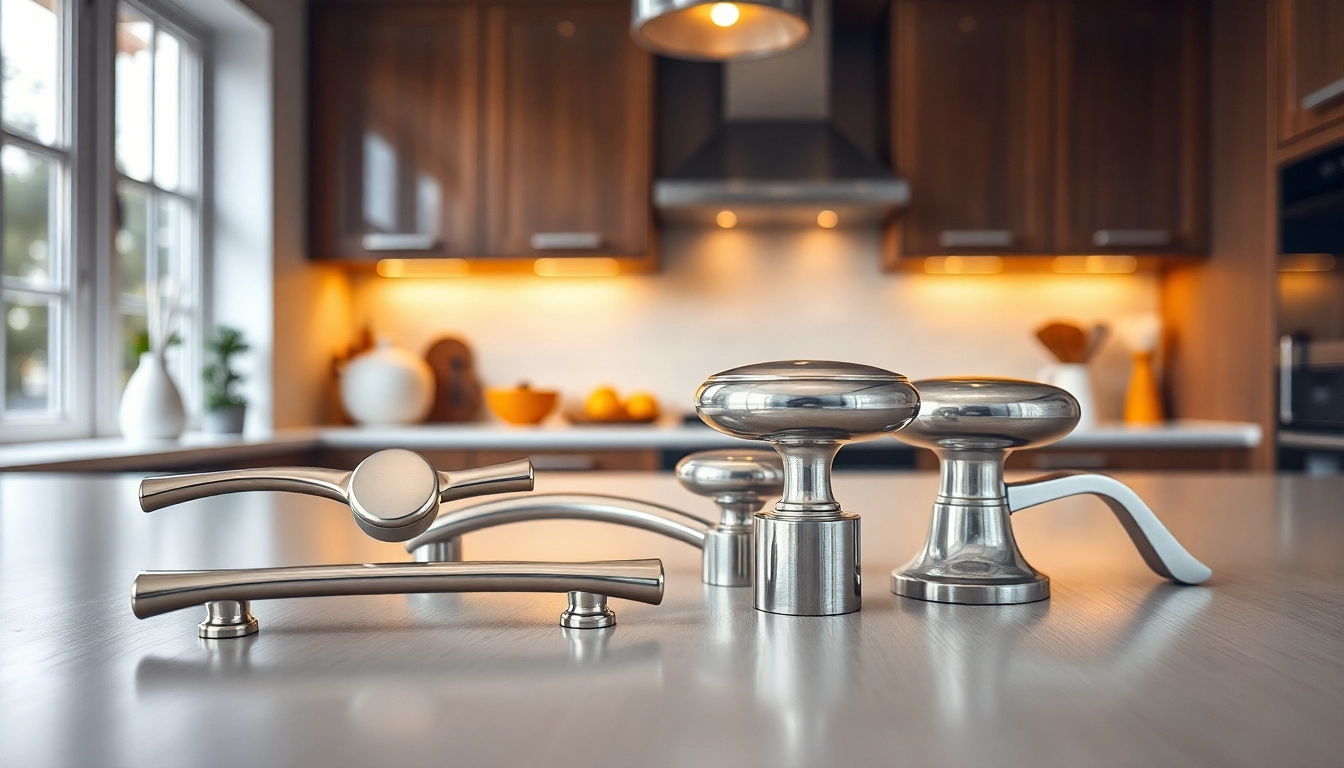Understanding Furniture Hardware Manufacturers
In the world of furniture design and construction, the importance of high-quality furniture hardware cannot be overstated. Whether you’re a professional furniture maker, a DIY enthusiast, or just someone looking to upgrade their home, knowing about furniture hardware manufacturers is essential. These manufacturers provide critical components that ensure functionality, aesthetic appeal, and longevity in furniture products.
What is Furniture Hardware?
Furniture hardware encompasses a vast array of components that serve various functions in furniture design. This includes hardware items such as hinges, drawer slides, knobs, pulls, and specialized mechanisms. Each of these elements contributes to the overall functionality and visual appeal of a piece of furniture. For instance, sturdy hinges enable doors to open and close smoothly, while stylish knobs and pulls enhance the aesthetics of cabinets or drawers.
Key Players in the Industry
The furniture hardware industry is populated by several key manufacturers that specialize in creating high-quality and innovative products. Companies like Top Knobs, renowned for their extensive line of premium cabinet and drawer hardware, epitomize the high standards expected in this market. Similarly, Rockler provides a comprehensive selection of hardware solutions, ensuring that both homeowners and professionals have access to reliable products for their projects. Other notable companies include Furnica and Richelieu Hardware, each bringing their unique design aesthetics and product lines to the market.
Importance of Quality in Furniture Hardware
Quality is paramount when selecting furniture hardware. Poor-quality components can lead to functional issues, such as misalignment or breakage, particularly with frequently used items like drawers and doors. High-quality furniture hardware not only enhances the durability of furniture but also adds value by improving the overall user experience. Furthermore, top-notch hardware often comes with warranties, providing peace of mind for consumers.
Types of Furniture Hardware Offered
The variety of furniture hardware available on the market today is expansive. It’s essential to understand the different types of hardware and their respective applications when choosing components for your furniture projects.
Cabinet Hinges and Drawer Slides
Cabinet hinges are fundamental to the functionality of cabinets, allowing doors to swing open and closed. There are several types of hinges, including concealed hinges, pivot hinges, and piano hinges, each designed for specific applications and aesthetic requirements. Similarly, drawer slides are crucial for facilitating the smooth opening and closing of drawers. Options such as ball-bearing slides, under-mount slides, and side-mount slides offer varying degrees of durability, ease of installation, and weight support.
Knobs, Pulls, and Handles
Knobs, pulls, and handles provide the final touch to furniture pieces, marrying functionality with aesthetics. They come in an array of designs, materials, and finishes, ranging from modern and sleek to rustic and traditional. Manufacturers strive to create unique pieces that can transform the look of cabinets and drawers, providing not just utility but also an opportunity for personal expression in design.
Specialty Hardware Solutions
Beyond the basic types of furniture hardware, specialty solutions cater to specific needs and innovative designs. This includes hardware designed for sliding doors, lift mechanisms for cabinets, and even locking mechanisms for security. Specialty hardware often requires precise engineering and can significantly enhance the functionality of furniture, making it more versatile and user-friendly.
Choosing the Right Manufacturer
Finding the right furniture hardware manufacturer is crucial for any project, whether it’s a large-scale furniture production or a minor home improvement project. Here are some considerations to keep in mind when evaluating potential manufacturers.
Evaluating Quality and Durability
When selecting a manufacturer, the quality and durability of their products should be at the forefront of your decision-making process. Look for manufacturers that provide detailed specifications and have established reputations for their robust testing processes. Additionally, researching customer reviews and case studies can provide insight into how a manufacturer’s hardware has performed in real-world applications.
Assessing Design and Aesthetics
The design of furniture hardware plays a significant role in the overall appearance of furniture pieces. As trends evolve, manufacturers need to adapt their designs to meet contemporary tastes while still providing timeless options. Choose a manufacturer that offers a range of styles and finishes, allowing you to select hardware that complements the specific aesthetic and functional requirements of your furniture.
Comparing Prices and Value
Cost is always a consideration when selecting hardware. However, it’s essential to evaluate the overall value rather than simply the initial price. High-quality hardware may come with a higher upfront cost but can save you money in the long run through increased durability and fewer replacements. Be sure to compare price points within the context of quality, warranty offerings, and aesthetic appeal.
Installation and Maintenance Tips
Proper installation and maintenance of furniture hardware are key to maximizing its performance and longevity. Here are some valuable tips for achieving optimal results.
Proper Installation Techniques
Following correct installation procedures is vital for the functionality of hardware. For hinges and slides, ensure alignment is precise, and consider pre-drilling holes to avoid splitting the wood. Using a level during installation can help prevent misalignment, which can lead to problems later. Additionally, consult the manufacturer’s instructions for specific suggestions tailored to their hardware models.
Maintenance for Longevity
Regular maintenance is necessary to extend the life of furniture hardware. Clean hardware periodically to remove dust, grease, and other debris that can impair functionality. Using lubricants on moving parts, such as drawer slides and hinges, can enhance their performance and prevent wear over time, ensuring smooth operation.
When to Replace Hardware
Understanding when to replace hardware is crucial for maintaining the integrity of your furniture. Signs that hardware may need to be replaced include difficulty in operation, visible wear and tear, or noise during movement. Staying ahead of these indicators can prevent further damage to furniture and ensure continued functionality.
Trends in Furniture Hardware
The furniture hardware sector constantly evolves, driven by design trends and advancements in materials. Awareness of these trends can be beneficial for manufacturers and consumers alike.
Emerging Design Trends
Recent design trends emphasize sleek, minimalist styles that focus on clean lines and functionality. Matte finishes and muted colors are gaining popularity, allowing hardware to blend seamlessly with furniture rather than standing out. Additionally, an increasing number of designs are focusing on ergonomic considerations, ensuring that hardware is not only beautiful but also comfortable and easy to use.
Eco-Friendly Manufacturing Practices
As sustainability becomes a significant concern for consumers, manufacturers are focusing on eco-friendly practices. This includes using sustainable materials, minimizing waste during production, and ensuring that their hardware can be recycled at the end of its life cycle. More manufacturers are also seeking certifications to demonstrate their commitment to environmental responsibility.
Innovative Materials and Finishes
Innovation in materials is another exciting trend within the furniture hardware sector. Manufacturers are exploring lightweight metals, sustainable woods, and composite materials that offer improved durability and performance. Moreover, advances in finishes, such as scratch-resistant and antimicrobial coatings, allow for both aesthetic and functional benefits that meet modern consumers’ demands.



